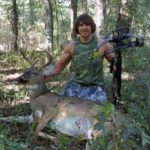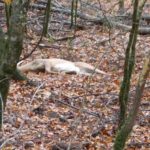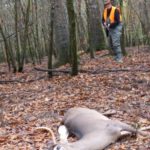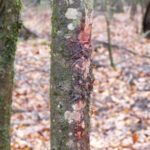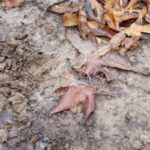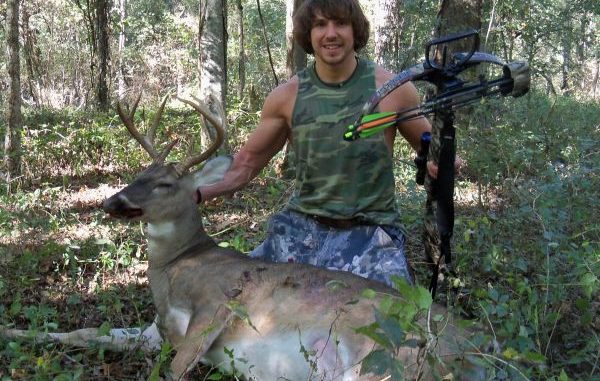
A hunt doesn’t end with the pull of the trigger or release of an arrow. Here are some tips to help find even the most-wily deer after it’s been wounded.
It is often at the most disheartening times that we have an epiphany and realize we must change our ways. For Thibodaux’s Joshua Chauvin, that defining moment came when he was just 17 years old.
As an inexperienced bow hunter, Chauvin shot his first buck on Three Rivers Wildlife Management Area, but the arrow hit the forward part of the shoulder and only penetrated about 6 inches.
After waiting 20 minutes, the LouisianaSportsman.com blogger started trailing the deer.
“I was walking straight down the blood trail when my deer jumped up and kept running,” Chauvin said. “With all that blood, I couldn’t believe it wasn’t dead. I foolishly kept following the spotty blood trail, jumping the buck up again two more times. Finally, after the spots became too few and far between, I lost the trail for good.
“I went from being euphoric to downright demoralized. Learning how to hunt on public land — alone, without anyone to teach me — had left me clueless on blood trailing. I realized that to be successful on my quest I would have to learn how to track these animals.”
Over the years, Chauvin has become a master tracker because blood trailing is like any other skill: It can be learned if one follows some basic rules and has plenty of patience.
Here are the lessons this die-hard hunter has learned over the years.
The shot
Noticing how a deer reacts at the time of the shot can give a clue as to whether or not it has been hit. The impact might knock the deer down or cause it to do the so-called “mule kick” (kicking its back legs high into the air).
Another clue is how the deer runs away. If it hops off with the tail held high, you might have missed. However, if it scoots away with its tail tucked and its head low to the ground you most likely connected.
But these observations are not foolproof. Many times a deer will give no indication whatsoever that it was hit, and sometimes it might seem to have been hit when the bullet never really connected.
Chauvin, who mostly bow hunts, said discerning shot placement isn’t an exact science, however.
“Many times, the reaction to a lung or gut shot is the same, so you have to use your instincts when deciding how well you placed your shot,” he said.
Mark the spot
One of the most-important things to ensure successful tracking is marking exactly where the deer was standing when you made your shot and the last place you saw him as he ran off.
Chauvin said the few seconds are crucial.
“This is when the most-valuable information will be collected in the shortest time frame,” he said.
Because he hunts in thick woods, Chauvin often relies on his ears more than his eyes.
“I can usually hear the undergrowth snapping or leaves crunching as the deer runs off,” he said. “Often I can hear him run through water, and that is a key thing because that’s where you’re at the most risk of losing the blood trail.”
Before leaving your stand, make a mental note of landmarks where the deer was standing and the last place you saw or heard him. Chauvin cautioned that, if you hunt from a tree stand, things will look different from ground level.
“Many times I have had to reclimb my tree to find the deer’s path,” he said.
Survey the ground
When you get to where the deer was standing, check for evidence of a hit. Look for hair, blood and hoof prints that will point you in the direction to start searching for the deer.
What you see on the ground can also indicate where the deer was hit.
“Dark blood means a liver shot, brown goo with or without blood means a gut shot and bubbles or foam in the blood mean a lung shot,” Chauvin said.
There might also be bits of bone, but that can be a bad thing because it often indicates the deer was hit in the leg.
There might be no sign at all of a hit, but that should not be interpreted as a miss; deer will sometimes run off and leave no evidence, even though a .30-06 bullet passed through their vitals.
Be patient
If you find evidence of a hit, it’s time to have some patience — one of the most-difficult requirements for tracking. Chauvin has a set schedule he follows, depending on what he saw at the moment of the shot and the clues found on the ground.
“I will wait one hour if I know it was a lung shot and two hours if I think it was heart shot,” he said. “The reason for the two-hour wait is because the heart is a small organ, and I may have missed it slightly. If I think it was a liver shot, I wait six hours before tracking and eight hours if it was a gut shot.
“What I can’t stress enough is to wait longer than you think is needed. If you jump your deer, the best bet is to let him sit another four to eight hours, if possible.”
Obviously, Chauvin errs on the side of caution, and that often means waiting until morning to start tracking. Doing so runs the risk of losing the deer to spoilage or predators, but he reasons that would happen anyway by pushing a deer out of reach by pursuing it too quickly.
Tracking
When tracking a deer, go slowly, and look for blood and other evidence. This might require the tracker to literally get on his hands and knees to find a single drop.
It is also helpful to mark the trail occasionally so that if signs disappear you can look back and get a clear idea of the direction the deer was traveling. Bits of toilet paper are perfect for this because they are highly visible and are biodegradable.
When following a blood trail, don’t forget to look up off the ground; one often finds blood on the sides of trees or bushes where the deer brushed them.
Also pay special attention to the far side of creek beds or fallen logs. If the wounded deer jumped these obstacles, its landing will disturb the ground and often dislodge blood.
Even if deer hit water, trailing is still possible, although trailing usually has to start a lot sooner than Chauvin would like. A deer will leave a trail of bubbles as it runs through water, so don’t call off the search just because your quarry entered flooded timber.
“I’ve found several deer by following water bubbles,” Chauvin said. “They will disappear in a few minutes if it is windy or the water is moving, but if you are in a calm, stagnated swamp, you can give 20 minutes or so for your animal to expire before following the bubbles.”
If you suspect the deer’s wound is not mortal, Chauvin’s advice is to go into stalking mode immediately.
“The deer will rest close to the shot until he feels better; then he’ll get up for good, so you want to find that buck and put him down before he leaves the area,” he said. “Take your time and look for the deer as much as you look down. Walking fast on the trail without looking up is a sure way to jump your deer with no chance of a shot.
“Keep your weapon ready if tracking quickly, because you may need to put the deer down for good, and you sometimes have only one chance.”
The trail goes cold
Frequently, even a good blood trail will suddenly disappear. This is not surprising when you consider that even a wounded deer can broad jump 30 feet and often will make a sharp turn.
When this happens, be sure to mark the last place you found blood. Tying a handkerchief to a limb is a good idea because you can easily see it as you search farther from that spot.
Chauvin uses what he calls the cone method to pick up a lost trail. Imagine a cone spreading wider in the direction the deer took. By methodically walking across this cone in parallel lines every few yards you have a good chance of coming across blood or some other sign.
Chauvin used this technique after shooting a nice buck on Red River WMA with his crossbow. The bolt flew true, but because of the angle it exited through the intestines on the far side and left virtually no blood trail.
Seven hours later Chauvin and best friend Curtis Hymel started their search.
“With the thick undergrowth, it was hard to walk, much less find a deer that left no blood trail,” Chauvin said. “After 30 minutes of carefully swerving back and forth every 5 yards to expand the cone with each pass, Curtis finally got my attention. Standing on a log, he said that the mission seemed hopeless.
“After watching all hope leave my face, he jumped down from the log, and I instantly realized his cruel joke. That log was my buck.”
When walking the cone, keep a sharp lookout in the distance for the deer’s underbelly. The white hair offers a sharp contrast to everything else in the woods, shining like a beacon.
One should also check out every fallen treetop within sight. Wounded deer look for thick cover, and they often take refuge in blowdowns.
Perseverance
One of the most-important elements of tracking is perseverance, he said.
“Never give up at finding blood,” Chauvin said. “This is your best chance to find your animal. Get on all fours and look for that next drop. Too many people just give up when one quick turn or leap of the animal left that blood a few feet from where they are looking.
“With tracking, just like with all things in hunting, never take the easy route and your hard work will eventually pay off.”
